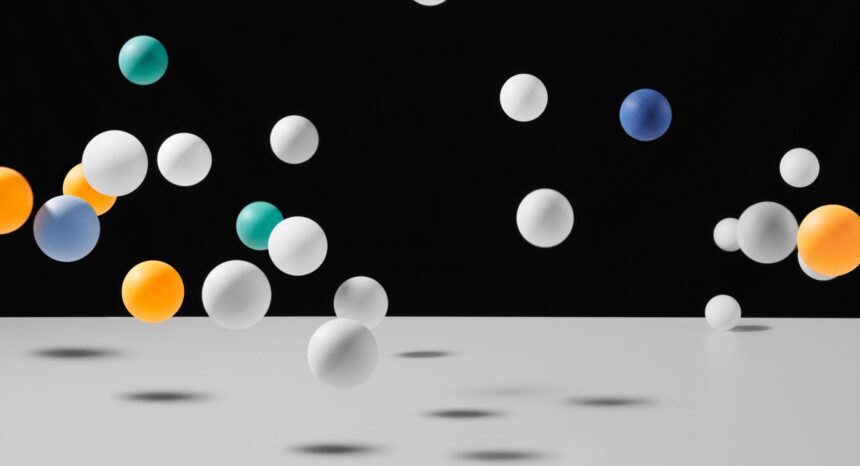No one knows who first put a name to it but reporting on the “convention bounce” has been a staple of campaign coverage since 1964 — the first year that pollsters sought to measure the bump in voter support that follows a presidential nominating convention.
The largest recorded bounce belongs to Bill Clinton, who gained a 16 percentage-point advantage from the 1992 Democratic convention. That bounce, however, doesn’t explain the general nature of the convention bounce. As the Democratic convention was about to get underway, third-party candidate Ross Perot abruptly pulled out of the race, leaving the fourth of voters who had been backing him without a candidate. The odds of a repeat are nearly zero.
Explanations for the convention bounce are often ad hoc. It’s been claimed that the advantage rests with the nominee whose convention comes second. The underlying assumption is that the resulting bounce disrupts the bounce of the nominee whose convention came first. It has also been claimed that the advantage rests with the nominee whose convention comes first. The assumption here is that the nominee of the out-party — which always holds the first convention — is usually the lesser known alternative and therefore has more to gain.
Both claims can’t be true and, in fact, neither is true. Since 1964, the bounce has split nearly 50-50 with the out-party nominee and in-party nominee each getting the bigger bounce about half the time.
Another imperfect explanation traces to the tumultuous 1968 Democratic Convention in Chicago. As the delegates inside the convention hall were fighting over the party’s stance on the Vietnam War, Chicago police and anti-war protesters were fighting it out on the streets. The lesson that some reporters drew from that convention is that a divisive convention reduces the bounce. In fact, the larger bounce has nearly as often gone to the nominee who presides over the more unruly convention as the one who presides over the tamer one.
Nevertheless, there is a degree of predictability to the convention bounce. The convention period marks the time when party identifiers who haven’t been paying close attention or have reservations about the party’s presumptive nominee tend to pick their candidate. Most of them settle on the nominee of their preferred party. As a result, the presumptive nominee who goes into the convention period with weaker backing from the party faithful usually gets the more sizeable bounce. That was the case, for example, with John McCain in 2008 — his 6-point bounce topped Barack Obama’s 4-point bounce.
A presumptive nominee who is underperforming is also positioned to get the larger bounce. A strong economy usually benefits the in-party, whereas a weak economy usually helps the out-party. If a presumptive nominee is not doing well by that standard, the convention provides an opportunity to highlight the issue, creating the possibility of an outsized bounce.
So what should journalists expect this time? As it turns out, neither candidate is likely to get a sizeable bounce. Joe Biden and Donald Trump came into the convention period with the strong backing of their party’s identifiers. In this polarized era, party identifiers who are undecided about supporting the party’s nominee are relatively few in number.
Nor is it clear that one or the other of this year’s nominees is underperforming. If this were January or February, Trump would be an underperforming nominee. It would be the first time in the modern era when an incumbent was trailing in the polls while presiding over a strong economy. But COVID-19 has derailed the economy, depriving Trump of the opportunity to reprise Ronald Reagan’s “Morning in America” 1984 convention theme.
Nominees typically get a bounce from their party’s convention. George McGovern in 1972, John Kerry in 2004 and Mitt Romney in 2012 are the only exceptions. Because each nominee usually picks up support, the net gain for either candidate is normally small, which has prompted some scholars to say that the convention effect should be called a “bump” rather than a bounce. Although Trump has claimed that his 2016 bounce was one of the “biggest” in memory, it was a mere 3%, which, along with Clinton’s 2% bounce, gave him a 1% bump.
In fact, every presidential convention since 1996 has produced a bump of 2% or less, which suggests that journalists could reasonably devote less ink and airtime to it. There are more noteworthy features of conventions, including what they reveal about the policy implications of choosing one or the other nominee as the nation’s next president.
Thomas E. Patterson is Bradlee Professor of Government & the Press at Harvard’s Kennedy School and author of the recently published Is the Republican Party Destroying Itself? Journalist’s Resource plans to post a new installment of his Election Beat 2020 series every week leading up to the 2020 U.S. election. Patterson can be contacted at thomas_patterson@harvard.edu.
Further Reading:
Aaron Weinschenk and Costas Panagopoulos, “Convention Effects,” Journal of Elections, Public Opinion and Parties, 2016.
James E. Campbell, Lynna L. Cherry and Kenneth A. Wink, “The Convention Bump,” American Politics Research, 1992.
Geoffrey Skelley, “Why counting on a convention bounce this year is risky,” FiveThirtyEight, July 8, 2020.
“The Post-Convention Bounce in Voter Preference, 1964-2020,” The American Presidency Project, University of California, Santa Barbara, 2020.


Expert Commentary